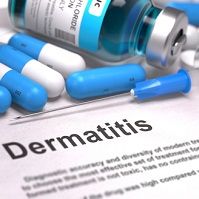AD: Not Everyone Has Access to Phototherapy
Phototherapy can be effective in treating AD but not all patients have access to the therapy, a study found.

Narrow band ultraviolet light B (NBUVB) was found to be the most commonly used wavelength and modality to treat atopic dermatitis (AD) in a review of 6 formats, with risks and benefits consistent with a second-line treatment option in children and adults with refractory conditions.
The use of phototherapy as an alternative strategy to systemic immuosuppresive agents for moderate to severe atopic dermatitis was reviewed by Nanette Silverberg, M.D., Department of Dermatology, Mt. Sinai St. Luke's-Roosevelt and Beth Israel Medical Centers, New York and colleagues and published in the September-October issue of Clinics in Dermatology.
Although phototherapy was found to be effective in short course for clearing some atopic dermatitis conditions, and in longer courses for maintenance in patients with chronic disease, the minimum 3 month treatment trial with incremental dose escalation may not be accessible for many patients, according to Silverberg and colleagues.
"Major barriers to patient access for phototherapy include local availability, travel time, missed school or work, coverage by insurers, out of pocket costs, patient skin type, skin cancer history, and use of photosensitizing medications," they indicated.
Skin cancer risk precludes combining phototherapy with topical calcineurin inhibitors, a black-box warning on the labeling. Concern about carcinogenicity has also reduced the use of an early, but still available treatment combining broad band (BBUVB) phototherapy with crude coal tar application (Goeckerman regimen). The reviewers note that while there are good data to support efficacy and tolerability, there are no long-term data on carcinogenicity.
MED
Dosing is determined by skin type and response, with initial intensity and duration of treatment calibrated either to the minimal erythema dose (), or corresponding to the Fitzpatrick skin phototype category, per AD treatment guidelines of the American Academy of Dermatology (AAD).
The reviewers found that NBUVB has largely replaced older modalities such as BBUVB and UVA-1, and is considered most effective in managing chronic conditions. Although UVA-1 is more effective for acute flares, it carries the risk of cataract formation and has limited availability in the U.S.
MEL
Monochromatic excimer light (), while not yet included in the AAD guidelines, may become a good option for localized, refractory AD lesions, according to the reviewers. The targeted phototherapy avoids unaffected areas, lessening risk of adverse reaction, and the 7 to 15 day periods between sessions, "may improve patient compliance and quality of life."